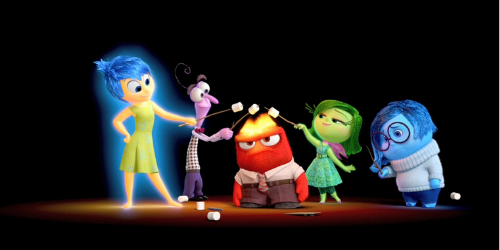Hilmi Yavuz, who states that past is a matter of identity for him, describes identity as the thing which remains unchanged within the changing itself. (Yavuz, 33). Does anything remain unchanged in an eleven-years-old child’s mind, then?
Hilmi Yavuz, who states that past is a matter of identity for him, describes identity as the thing which remains unchanged within the changing itself. (Yavuz, 33). Does anything remain unchanged in an eleven-years-old child’s mind, then? Is it possible to refer an identity that a child at this age preserves in the course of time? Free from any doubt, tens of experts on a variety of disciplines would have different answers to this question. Peter Docter’s -who has taken part in four fantastic productions of PIXAR as being both the director and scriptwriter of Up and Monsters, Inc and as the scriptwriter of Toy Story and Wall-E- animation movie Inside Out, on the other hand, answers the identity issue i mentioned above via a different fiction and visuality that attracts older audiences as well as the younger ones.
The movie narrates eleven-years-old Riley’s story of growing up. Each change in this little girl’s outer world and her reactions to these changes are dominated by the control centre in her. Joy, being the very first member of the control centre and the narrator of the movie as well, shows herself as soon as the protagonist opens her eyes to the world. Right after that, she gets introduced to emotions characterised as Sadness, Fear, Disgust and Anger. Considering the fact that other emotions sprang by the composition of these five essential feelings, selection of these feelings is highly appropriate. Joy had been the most determinant feeling on Riley’s reactions to the outer world and she had been the one that controls the inside world predominantly until Riley reached the age eleven. Joy always wants every single incident in Riley’s daily life to finalise with happiness and memories to be stored in this way. Main plot of the movie is fictionalised on fixing the outcomes of this individual zeal of Joy’s.
Throughout this fixing process, the audience gets a chance to trace the elements which forms Riley’s identity and remains unchanged in her mind or could not vanish at all no matter how hard it tried to change. Firstly, Joy tells the audience about Riley’s "islands of personality". These islands are called as Family, Friendship, Honesty, Hockey and Goofball and are formed by Riley’s experiences, serving as a basis for who Riley is. These bases are the witnesses of her grow up adventure. Their absence cause Riley to feel wretched and even experience a huge anaesthesia. (See the 76th minute in the movie) Emotional void she felt after they moved out causes these islands of personality to lose their nature, Riley to waver and feel unidentified for a short period of time. At the end of the movie, as Riley gets one year older, it is seen that islands already existing extends and new islands such as Academy- Travel Island, Fashion Island and Boy Band Island are introduced. Even though key elements that make up a child’s personality increase in number throughout the grow up adventure, it is possible for these new islands to extend or shrink in time.
Experiences enabling the formation of personality islands are named as “core memories” in the movie. These memories are the incidents that names after the islands and are determinant on protagonist’s identity. A joyous moment she spent with her parents, a small game played with a friend or sport activity she has been doing since early ages rank among core memories in her mind. Very first core memories of Riley are predominantly under Joy’s influence. But it is seen that core memories which are made up later on plays a role in the formation of new islands and are actually sprang by different combinations of feelings that already exist inside. Herewith it is emphasized that not only happy memories but also the ones generating different emotions are unforgettable and are determinant on our personality. After a long journey Joy and Sadness went on together, they touch core memories in collaboration and this creates an opportunity for Riley to experience a new emotion and a new core memory at the same time. This memory springs by the merge of Joy and Sadness. And it lets the family island revive.
Mind, which means “to preserve the past in the present” may prosper by core memories but it may also require one to give up on certain joyous memories. In favour of new life experiences, some of them are bound to be forgotten. “The Subconscious”, the place we encounter during the journey of Joy and Sadness, is described as the place where everything that causes problem are stored. Here, pent-up phobias of Riley are seen. “Memory Dump” is showed as the place where past incidents that are not recalled anymore vanishes for ever. Vanishing of memories in both places, enables to recall the core memories that taken part in Riley’s identity formation much easier. In this way, it may be said that Memory Dump and The Subconscious let core memories to shine brighter.
As a result, Inside Out has had a lot to narrate and to point for everyone who admits that human identity is correlated with the past. It has told us that it is possible for a human being, even it is a child in their grow up process, to preserve in their minds lots of memories that play a role in personality formation despite all the movement and change around them. This process was not presented loudly but within its own fiction and via the visuality that appeals to audiences at different ages. Well-described personality islands presented that personality and past never ruptures and this past exists in the present (in the actions of present) while they are portrayed as core memories which forms personality islands and connects them with past. Places where other memories are lost in order for core memories to remain fresh are named as The Subconscious and Memory Dump.
Bibliography
Yavuz, Hilmi. Şiir Henüz. İstanbul: Est& Non Yayınları, 1999.

